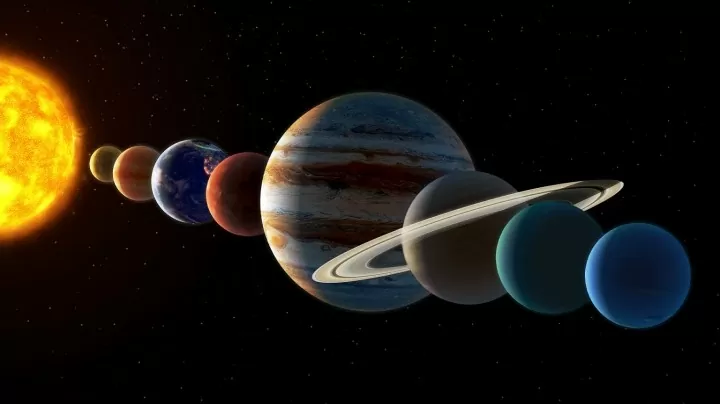This January, the night sky will be especially bright as six planets shine together in a spectacular astronomical phenomenon known as the "planetary parade."
 |
| Simulation image of the "parade of planets". (Source: Starwalk) |
This January, the night sky will be especially bright as six planets shine together in a spectacular astronomical phenomenon known as the "planetary parade". What's special is that we can admire most of these planets with the naked eye.
A planetary parade occurs when a group of planets appear to line up in the night sky. "Although they don't form a perfect line, they are still quite close together on one side of the Sun," said Hannah Sparkes, curator at the Bishop Museum of Nature and Science in Florida.
This astronomical phenomenon is not uncommon and can occur every year depending on the alignment of the planets. A similar parade took place last June, but only two planets were visible without special instruments.
According to astronomers, in the first two months of 2025, we will have the opportunity to admire the planets Venus, Mars, Jupiter and Saturn with the naked eye. As for Uranus and Neptune, you will need a telescope or binoculars to see them clearly.
What’s interesting about this parade is that Mars will shine brighter than ever because the planet is directly opposite the Sun. Especially on the evenings of January 17 and 18, Venus and Saturn will be extremely close to each other, only 2 degrees apart.
Any clear night this January is a great time to see the planets, says Kevin Williams, director of astronomy at Buffalo State University. Just head outside on a clear night a few hours after sunset and face south. Venus and Saturn will be in the southwest corner of the sky, Jupiter will be in the south, and Mars will appear in the southeast or east. The planets will shine brighter than the surrounding stars, and Mars will stand out as a reddish-orange dot in the sky.
Sparkes encourages astronomy enthusiasts to download stargazing apps to make finding planets easier.
In addition, Mr. Williams also added that at the end of February, Mercury will join this planetary parade as the "7th planet" and then the planets will gradually move further away.
Source



![[Photo] General Secretary To Lam receives Chief of the Central Office of the Lao People's Revolutionary Party](https://vphoto.vietnam.vn/thumb/1200x675/vietnam/resource/IMAGE/2025/5/30/140435f4b39d4599a3d17975dfb444c5)
![[Photo] National Conference "100 years of Vietnamese Revolutionary Press accompanying the glorious cause of the Party and the nation"](https://vphoto.vietnam.vn/thumb/1200x675/vietnam/resource/IMAGE/2025/5/30/1cf6cd5c8a934ebfa347028dcb08358c)
![[Photo] A delegation of 100 journalists from the Vietnam Journalists Association visits the soldiers and people of Truong Sa island district.](https://vphoto.vietnam.vn/thumb/1200x675/vietnam/resource/IMAGE/2025/5/30/0984a986227d4e988177f560d2e1563e)

![[Photo] Journalists moved to tears at the Memorial Service for the soldiers who died in Gac Ma](https://vphoto.vietnam.vn/thumb/1200x675/vietnam/resource/IMAGE/2025/5/30/9454613a55c54c16bf8c0efa51883456)




















































































Comment (0)